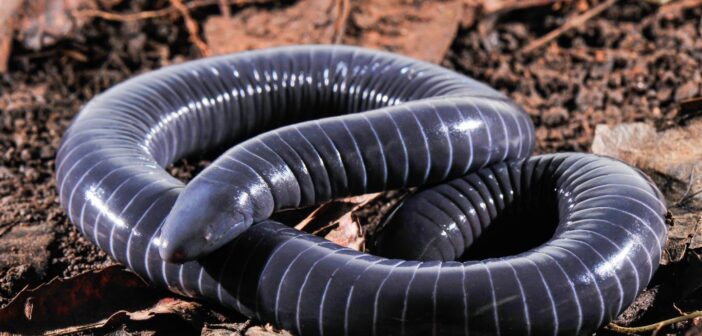By The Newyork Times
If a worm and a snake had a slimy, scandalous love child, it might look something like a caecilian: a legless creature that’s actually neither worm nor snake, but a soil-dwelling amphibian found in tropics across the globe.
Content to spend most of their time beneath the forest floor, caecilians are elusive and poorly understood. Which is why Carlos Jared, a biologist at the Butantan Institute in São Paulo, Brazil, has spent a good part of the last three decades hot on their trail.
Bagging a caecilian specimen, he said, often takes hours of laborious digging, carefully executed so a poorly aimed shovel doesn’t cleave the creature in two. Once a specimen is spotted, “you have to jump on it,” Dr. Jared said, and then wrestle the wriggly amphibian — which, depending on the species, can range in length from a couple inches to five feet — into a sack. Many caecilians have squirmed out of Dr. Jared’s grasp at the last moment, gleefully greased by a gelatinous goo that oozes out of their skin.
But Dr. Jared said the animals’ fascinating and sometimes baffling biology makes the incessant chasing more than worth it. His team’s latest discovery, published Friday in iScience, shows caecilians’ mouths might be rimmed by venom-tipped teeth, not unlike those found in some snakes.
The discovery would mark the first time venom glands have been found in the mouth of an amphibian — one whose evolutionary history predates the appearance of snakes by more than 100 million years. That could make little-known caecilians among the oldest venomous biters on Earth.
Like most other amphibians, caecilians have long been thought to produce only poisons, which, unlike venoms, aren’t actively injected into other creatures. So Pedro Luiz Mailho-Fontana, a postdoctoral scholar working with Dr. Jared, was baffled when he discovered a series of fluid-filled ducts lining the teeth of a ringed caecilian specimen in the lab. “This is a very different thing here,” he recalled thinking.
After searching the mouths of newly hatched caecilians, Dr. Mailho-Fontana determined that the tooth-cradling glands grow out of the same tissue that gives rise to teeth.
heads.

This image shows the head with the skin partially removed to show the tooth-related glands around the lips.Credit…Carlos Jared
Caecilians, like some snakes, are equipped with impressive teeth, and can get pretty “bitey,” said Emma Sherratt, an evolutionary biologist at the University of Adelaide who wasn’t involved in the study.
If caecilians also pack a venomous bite, they may have independently stumbled upon a strategy that’s worked out well for many snakes. That would be “really interesting and remarkable,” said Shab Mohammadi, an evolutionary biologist at the University of Nebraska-Lincoln who wasn’t involved in the study. Perhaps limblessness is an important impetus for the evolution of tooth-borne toxins.



